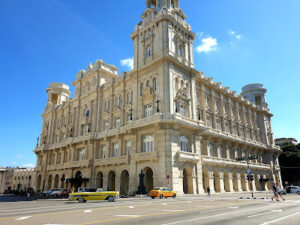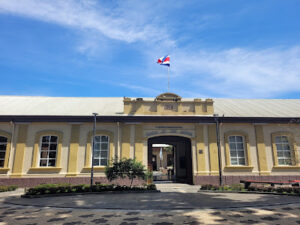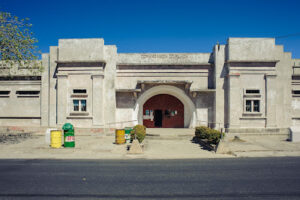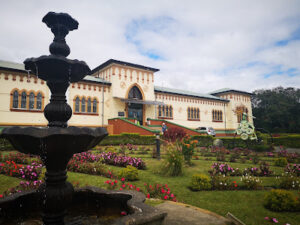Berestye Archeological Museum

Introduction
The Berestye Archaeological Museum, located in the city of Brest in the Republic of Belarus, offers visitors an immersive journey into a medieval East Slavic town. Situated within the historic grounds of Brest Fortress on Hospital Island—where the Western Bug and Mukhavets Rivers meet—this museum presents an extraordinary archaeological site preserved beneath a striking modern pavilion. For anyone curious about medieval Slavic culture, the museum offers a truly unique experience.


About the Museum
At the heart of the Berestye Archaeological Museum lies a remarkable excavation spanning approximately 1 800 square metres. Conducted between 1968 and 1981 under the direction of Dr. P. F. Lysenko from the Belarusian Academy of Sciences, archaeologists unearthed a dense cluster of structures dating from the eleventh to the thirteenth centuries. Visitors today can view 28 genuine wooden residential and utility timber buildings, some preserved to the level of twelve log tiers—a rare phenomenon in Slavic archaeology.
A purpose‑built pavilion measuring approximately forty by sixty metres—constructed of concrete, glass and anodised aluminium—envelops the site like a protective canopy. Its architecture evokes both a pitched roof of a traditional dwelling and a slice of earth revealing the past beneath.
Surrounding the excavation, fourteen exhibition alcoves or halls display more than 1 200 artefacts (and the museum houses over 43 000 in its collection). These items—including pottery, tools, jewellery, wooden objects, textiles and written artefacts—illustrate all aspects of life in medieval Berestye: craftwork, trade, agriculture, household customs and spiritual beliefs.
The museum is open most days (generally from ten in the morning until around five‑thirty or six in the evening, with Monday and Tuesday closures in winter months) and welcomes tens of thousands of guests each year. It operates as a branch of the Brest Regional Local History Museum.
Interesting Facts
- The museum preserves 28 authentic timber dwellings and workshops from the thirteenth century, some still intact to twelve log tiers deep.
- The excavation zone covers nearly 1 200 m² of a medieval crafts quarter, discovered at a depth of about four metres.
- Among the unique finds are a boxwood comb inscribed with early Cyrillic letters (often used to educate children), a bone chess‑piece king, and a rare oak plough believed to be the only such agricultural implement of its period found in Europe.
- The exhibits include a striking variety of craft products: iron and steel tools, weapons, locks, chainmail, leather footwear (often richly embroidered), pottery both decorative and stamped, wooden vessels formed by coopers, textiles preserved in fragments, spindle whorls, weaving tools, decorated jewellery and engraved writing implements.
- The museum offers innovative visitor services: audio‑guides in several languages, virtual tours, 3D‑virtual‑reality panoramas using VR glasses, and a cinema hall showing documentaries and animations related to the history of Berestye.
- Visitors may enjoy special educational formats such as themed tours (“Chopped with the axe” to illustrate woodworking), lecture series on ancient Berestye, and interactive quest‑style excursions tailored for families and school groups.
Photo Gallery






Physical Location
Contact Details
Phone: +37516 253 1011
Website: brokm.by/berestye/
Facebook: facebook.com/people/%D0%92%D0%B8%D1%82%D0%B0%D0%BB%D0%B8%D0%B9-%D0%98%D0%B2%D0%B0%D0%BD%D0%BE%D0%B2/100008335244506
Conclusion
The Berestye Archaeological Museum presents a rare opportunity to witness a medieval East Slavic settlement preserved in its original context. With its thoughtfully designed pavilion, exceptional artefact collection and engaging visitor experiences, the museum offers both depth of scholarship and immersive storytelling. Whether you are a history enthusiast, a family seeking a memorable cultural outing or simply intrigued by the layers beneath modern cities, this museum is a highlight of Brest and a cultural gem in the Republic of Belarus. A visit here is not just a museum tour—it is a vivid journey into the daily life of a medieval town.




